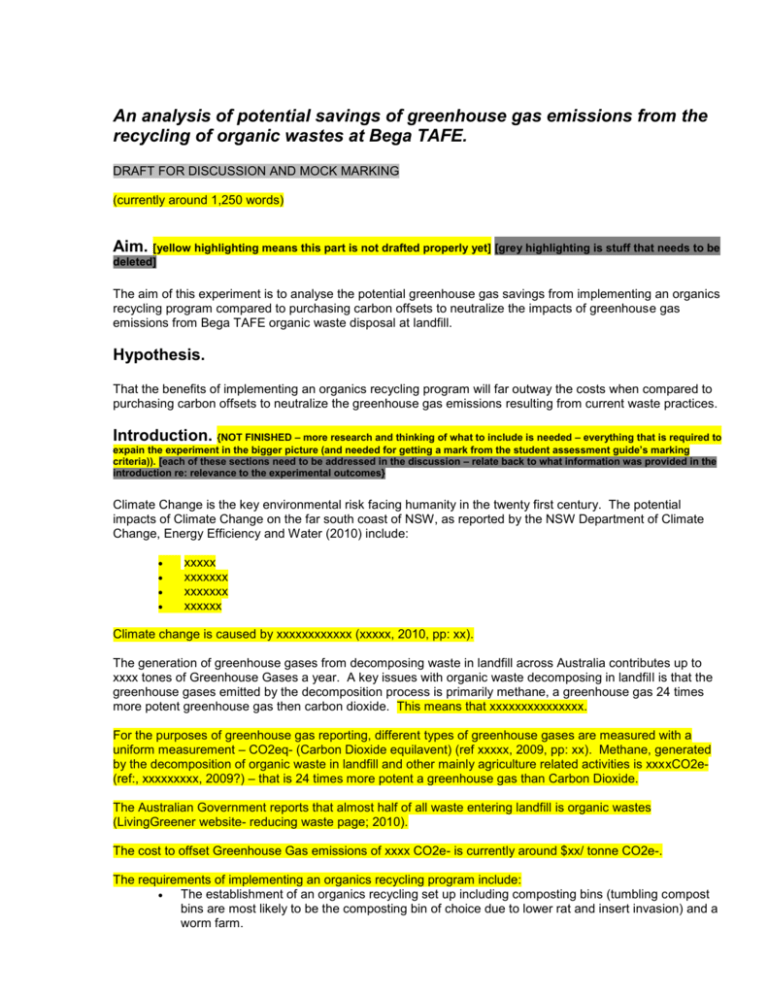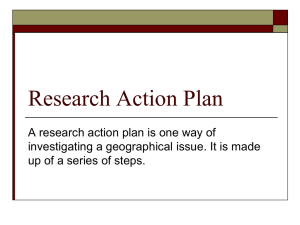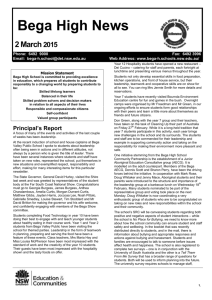First draft organic waste reycling report
advertisement

An analysis of potential savings of greenhouse gas emissions from the
recycling of organic wastes at Bega TAFE.
DRAFT FOR DISCUSSION AND MOCK MARKING
(currently around 1,250 words)
Aim. [yellow highlighting means this part is not drafted properly yet] [grey highlighting is stuff that needs to be
deleted]
The aim of this experiment is to analyse the potential greenhouse gas savings from implementing an organics
recycling program compared to purchasing carbon offsets to neutralize the impacts of greenhouse gas
emissions from Bega TAFE organic waste disposal at landfill.
Hypothesis.
That the benefits of implementing an organics recycling program will far outway the costs when compared to
purchasing carbon offsets to neutralize the greenhouse gas emissions resulting from current waste practices.
Introduction. {NOT FINISHED – more research and thinking of what to include is needed – everything that is required to
expain the experiment in the bigger picture (and needed for getting a mark from the student assessment guide’s marking
criteria)). [each of these sections need to be addressed in the discussion – relate back to what information was provided in the
introduction re: relevance to the experimental outcomes}
Climate Change is the key environmental risk facing humanity in the twenty first century. The potential
impacts of Climate Change on the far south coast of NSW, as reported by the NSW Department of Climate
Change, Energy Efficiency and Water (2010) include:
xxxxx
xxxxxxx
xxxxxxx
xxxxxx
Climate change is caused by xxxxxxxxxxxx (xxxxx, 2010, pp: xx).
The generation of greenhouse gases from decomposing waste in landfill across Australia contributes up to
xxxx tones of Greenhouse Gases a year. A key issues with organic waste decomposing in landfill is that the
greenhouse gases emitted by the decomposition process is primarily methane, a greenhouse gas 24 times
more potent greenhouse gas then carbon dioxide. This means that xxxxxxxxxxxxxxx.
For the purposes of greenhouse gas reporting, different types of greenhouse gases are measured with a
uniform measurement – CO2eq- (Carbon Dioxide equilavent) (ref xxxxx, 2009, pp: xx). Methane, generated
by the decomposition of organic waste in landfill and other mainly agriculture related activities is xxxxCO2e(ref:, xxxxxxxxx, 2009?) – that is 24 times more potent a greenhouse gas than Carbon Dioxide.
The Australian Government reports that almost half of all waste entering landfill is organic wastes
(LivingGreener website- reducing waste page; 2010).
The cost to offset Greenhouse Gas emissions of xxxx CO2e- is currently around $xx/ tonne CO2e-.
The requirements of implementing an organics recycling program include:
The establishment of an organics recycling set up including composting bins (tumbling compost
bins are most likely to be the composting bin of choice due to lower rat and insert invasion) and a
worm farm.
The educational and awareness program to ensure organic wastes are separated from the
general waste stream for recycling
Human resources to collect separated wastes and put in organics recycling setup (approximately
x hours per week for the Bega Campus – see Appendix A for calculations)
Human resources to turn bins, harvest and package compost, worm castings and worm juice
Human resources to measure the amount of waste diverted from landfill and calculate the
potential greenhouse gas savings from the organic waste program.
{introduce best practice in composing and the requirements of a healthy compost. Worm farm} Appendix X
provides an overview of the requirements of establishing and maintaining a healthy compost and worm farm.
The factors most relevant to the success of the Bega TAFE organics recycling program are:
Ongoing maintenance activities including daily tumbling in colder weather
{Introduce experimental variables – lots of this could go in appendix to save word count} This waste audit will
be undertaken without any prior warning to the General Education (General Ed) or Hospitality department of
Bega TAFE to help reduce the impacts of forewarning changing business as usual recycling and waste
practices.
This experiment will also assess the contamination of non-recyclable waste with recyclables. This will help
calculate the potential amount of recyclables that could be recycled but are currently entering landfill due to a
range of factors. {this could go in appendix to reduce work count} * Note: the following materials are
considered recyclable under the Bega Valley Shire Council’s recycling services (Bega Valley Shire Council,
Waste and recycling FAQs, 2010):
Plastic Containers - numbered 1, 2, 3 or 5 make sure it has the
Glass bottles and jars – Green, clear and Amber (brown)
Aluminium Cans
Paper and Cardboard
Milk and Juice Cartons - liquid paper board and tetra packs
Steel Tins and Cans - includes empty aerosol cans
around the numbers.
Materials.
One bag of waste from General Education
One bag of waste from Hospitality
One large tarp to separate waste on
Tongs
Bucket
Scales
Old clothes and plastic bags to wear during the waste audit
Data record sheets (see Appendix A)
Gloves
Face masks
Goggles
Plastic garbage bin bags.
Method.
1. Plan to acquire one bag of waste from General Ed and Hospitality on normal operating days. Do
not give forewarning to those who will be using the bins as per normal operating procedures.
Label the bags “General Ed” and “Hospitality” respectively.
2. All participants don personal protective equipment (old clothes, plastic bags covering shoes, face
mask, gloves and goggles).
3. Identify one participant to participate in the calculation of the weights of the waste bags. Use the
scales to get the weight of one participant and the General Ed waste bag. Record the weight in
Table 1.
4. Weight the participant without the bag. Record the weight in Table 1.
5. Subtract the weight of the participant from the weight of the participant with the bag to get the
weight of the bag. Record the weight of the bag in Table 1.
6. Repeat steps 3-5 for the Hospitality waste bag.
7. Empty the General Ed bin onto the tarp. Using the tongs, separate the waste into piles of organic
waste, recyclable waste and non-recyclable waste. Bag the waste into plastic garbage bin bags.
8. Weight each of the bags and record the results in Table 2.
9. Repeat steps 7 and 8 for the Hospitality bin.
10. Dispose of each bag of waste appropriately.
11. Clean up experiment and waste hands.
Results.
The weight of each rubbish bin is recorded in Table 1.
Table 1. The weight of participant and waste bags.
General Education weights (kgs)
Weight of participant and bag
Weight of participant
Weight of bag only
Hospitality weights (kgs)
The categories of waste in each bin is recorded in Table 2 and shown in Figures 1 and 2.
Table 2. The amount of organic, recyclable and non-recyclable waste for each bin
General Ed bin General Ed bin Hospitality
Hospitality bin
sub-totals
proportions of
bin subproportion of
sub-totals
totals
sub-totals
Organic waste
(kgs)
Other
recyclable
materials (kgs)
Non-recyclable
waste (kgs)
Total bin
weight (kgs)
Total
Proportion
of total
Insert picture of first waste audit
Figure 1. The contents of the General Education bin separated into the three waste streams (from left to right:
organic waste, recyclable wastes and non-recyclable wastes)
Insert picture of second waste audit
Figure 2. The contents of the Hospitality bin separated into the three waste streams (from left to right: organic
waste, recyclable wastes and non-recyclable wastes)
Discussion.
- list how much organic waste potentially generated at Bega TAFE per year
- list the estimated cost (per year) of establishing and maintaining an organic recycling service at Bega TAFE
- discuss wastes not included in experiment that could be recycled (tree prunings, grass clippings)
- discuss results as to accuracy (was it a standard activity day, what type of day would generate different
wastes, discuss how averages were gained from results – expand on this in an Appendix, e.g. allowing for
teaching & non-teaching days inc weekends and school holidays, differences in hospitality days (when
cooking, when not),
- discuss limits of implementing program (requirement for 3:1 ratio for good composting,
- other stuff???
Conclusion.
Will the human and financial resources needed cost less than the cost of offsetting the same amount of
greenhouse gases generated if the waste went to landfill? If so, recommend that the experiment be improved
and a more accurate cost/ benefit analysis be undertaken (mention potential improvements to the experiment
to control experimental variables – e.g. longer time, better auditing program, audit of all waste including
garden waste?) and a report prepared for management. Also include any other benefits of implementing
program such as:
Potential reduction in greenhouse gases per year for Bega TAFE (and extrapolate results to
generate potential savings at all TAFE campuses in NSW)
increased awareness of the benefits of recycling of organic and recycables everywhere (not just
at TAFE);
access to organic materials for use on TAFE plants;
any potential money that could be made for selling (or good will and community education
created by giving away as prizes) compoast and worm castings/ worm juice.
References.
Australian Government, Department of the Environment, Water, Heritage and the Arts (2010) LivingGreener
website- reducing waste page; accessed 5.9.10 available at: http://www.livinggreener.gov.au/beinformed/reducing-waste/reducing-waste
Bega Valley Shire Council, Waste and Recycling FAQs, accessed 5 September 2010
http://begavalley.nsw.gov.au/Environment/Waste_Services/faqs.htm
Recycled Organics Unit (2007). Organics Recycling in Australia: Industry Statistics 2007. Report prepared for Compost
Australia by the Recycled Organics Unit. Internet publication www.compostaustralia.com.au
(http://www.wmaa.asn.au/uploads/documents/Organics%20recycling%20in%20Australia%202007%20final.pdf)
NSW Department of Climate Change, Energy Efficiency and Water (2010)
(xxxxx, 2010, pp: xx).
[not used yet but really good so go back to these when can]
Australian Recycling Values (2008) A net benefits assessment. Australian Council of Recyclers (ACOR) Inc. accessed 5.9.10
http://www.acor.org.au/pdfs/Recycling%20Values%20-%20Net%20Benefit%20Study%20280708.pdf
Compost production and use in horticulture (WA Govt)
http://www.agric.wa.gov.au/objtwr/imported_assets/content/hort/compost_bulletin08.pdf
(D27) On-farm Composting as an Environmentally and Socially Sustainable Resource Recovery Scheme for
Organics Johannes Biala, Ed Henty, The Organic Force
http://www.elspl.com.au/Compost/Publications/D27.htm
![School [recycling, compost, or waste reduction] case study](http://s3.studylib.net/store/data/005898792_1-08f8f34cac7a57869e865e0c3646f10a-300x300.png)






